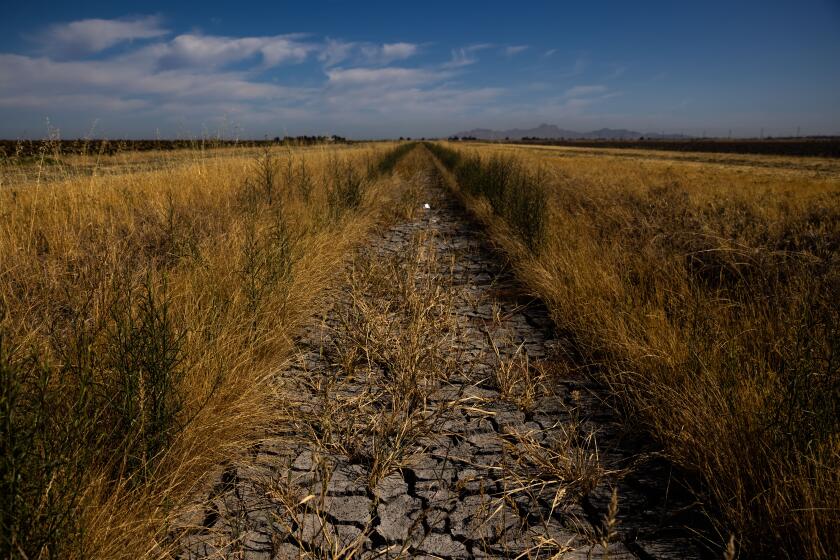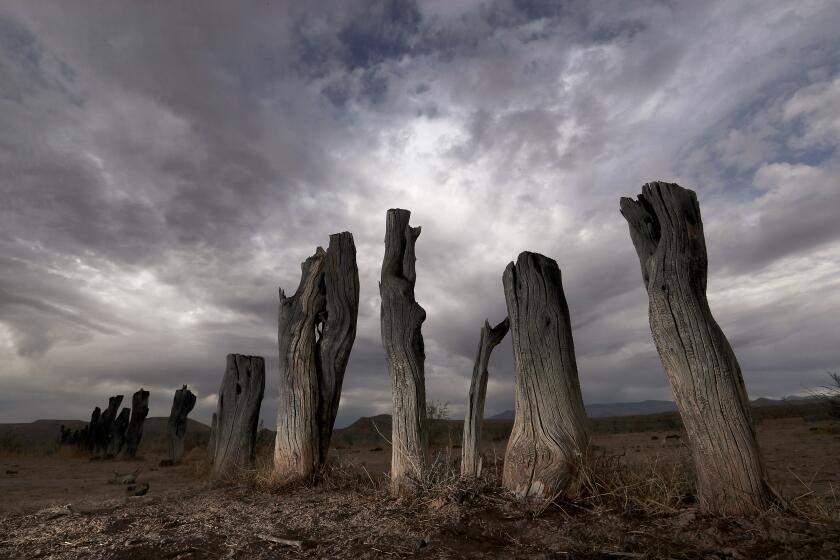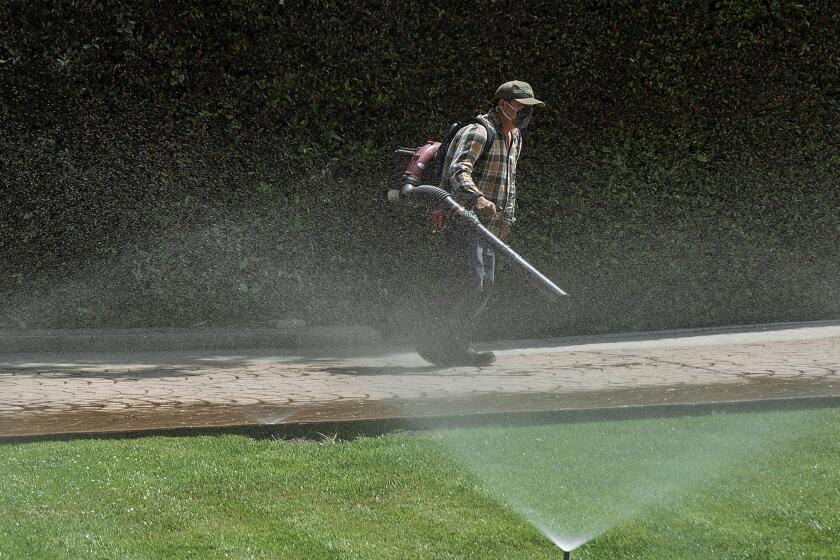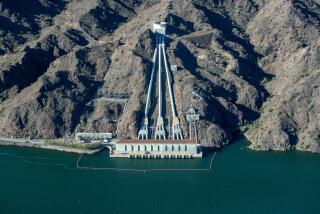Water shortages on Colorado River could eventually hit California, Arizona warns
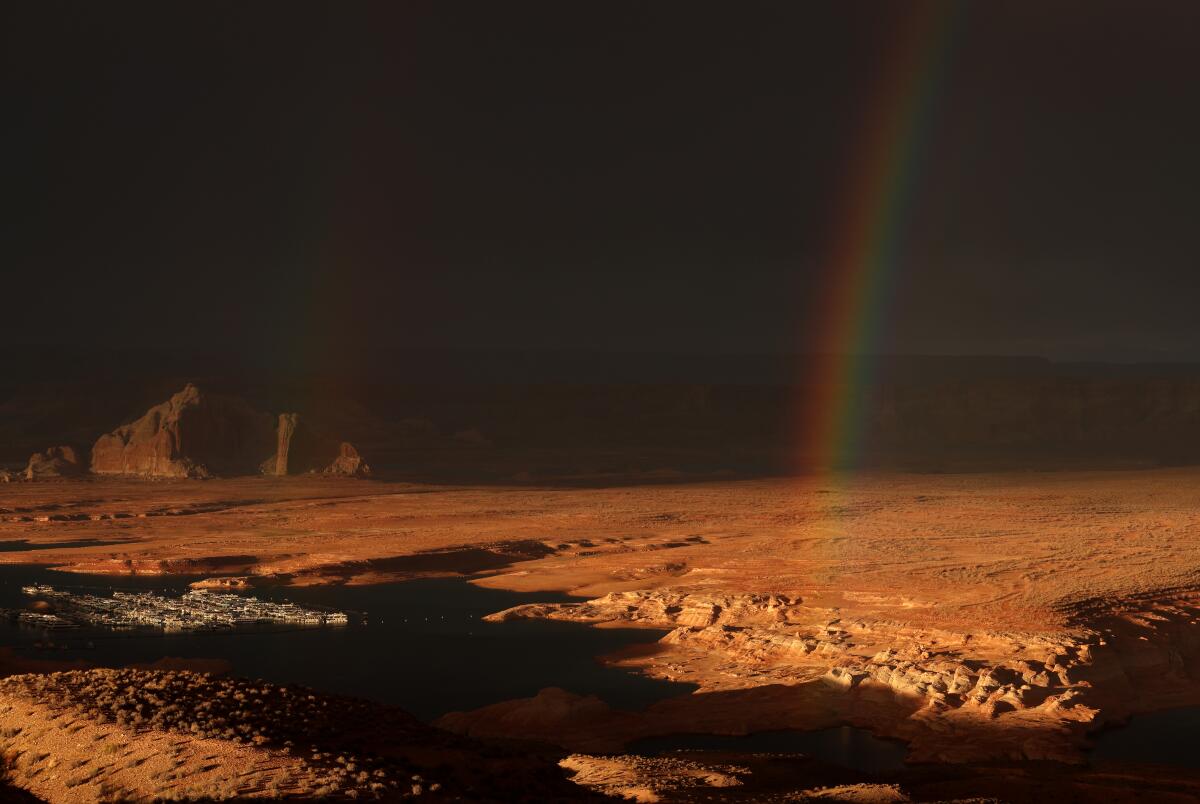
In another sign of trouble for California’s scarce water supplies, Arizona’s top water officials said the worsening depletion of the Colorado River’s reservoirs will require serious action to combat the effects of a 22-year megadrought that shows no sign of letting up.
Federal projections show Lake Mead and Lake Powell, the country’s two largest reservoirs, will keep on declining in the coming months, reaching a shortage level likely to trigger larger water cuts in 2023 for Arizona, Nevada and Mexico — and which could also eventually force similar reductions in California.
“The gravity of the immediate situation is serious,” said Tom Buschatzke, director of the Arizona Department of Water Resources. “We expect further significant actions to reduce water use will be required.”
The Colorado River supplies water to nearly 40 million people, flowing to cities, farmlands and tribal nations from the Rocky Mountains to Southern California. The river has for decades been chronically overused. So much water is diverted that the river’s delta in Mexico largely dried up decades ago, leaving only scattered natural wetlands in an otherwise dry river channel that runs through farmland.
The added heat from global warming has made drought-stricken lands extra-dry. It will take more precipitation than usual to end it.
State and federal officials spoke at a meeting in Phoenix on Friday, three days after the federal Bureau of Reclamation announced plans to reduce the amount of water released from Lake Powell this year to reduce risks of the reservoir’s water level falling too low at Glen Canyon Dam. Last year, the dam generated enough power to meet the needs of more than 300,000 homes — something it would not be able to do if the water levels plummet so badly that it can no longer generate electricity.
Buschatzke added that more needs to be done to protect water levels in Lake Mead, which releases water that flows to Arizona, Nevada, California and Mexico.
Lake Powell, which straddles the Arizona-Utah state line, has declined to just 24% of full capacity, the lowest point since it was filled in the 1960s following the construction of Glen Canyon Dam.
The water that is released from Lake Powell flows through the Grand Canyon and reaches Lake Mead near Las Vegas. Lake Mead has dropped to 30% of full capacity, its lowest level since it was filled in the 1930s during the Great Depression.
The latest projections, Buschatzke said, show the reduced releases of water from Lake Powell will result in a roughly 22-foot drop in Lake Mead’s level.
“It’s about maintaining flows in the Colorado River, including through the Grand Canyon,” Buschatzke said. Because if the flows were to be severely restricted, the declines in Lake Mead would accelerate.
Buschatzke noted that the surface of Lake Mead now sits just under 1,054 feet above sea level. If the reservoir were to drop to 895 feet, he pointed out, it would reach “dead pool” — the point at which water would no longer pass through Hoover Dam.
The federal government’s latest plan will involve releasing about 500,000 acre-feet of water from Flaming Gorge Reservoir, which is located upstream, and holding back an additional 480,000 acre-feet in Lake Powell.
The West is experiencing its most severe megadrought in a millennium, according to a new study. Scientists say climate change is playing a major role.
California, Arizona and Nevada used 6.8 million acre-feet of Colorado River water in 2020. (Each acre-foot is enough water to cover a football field about 1 foot deep.)
If Lake Powell were to drop to lower levels, below elevation 3,490 feet, water could still be routed through four 8-foot-wide pipes, the dam’s river outlet works.
“However, if the lake were to decline, that capacity to release water lessens,” said Daniel Bunk, chief of the Boulder Canyon Operations Office for the federal Bureau of Reclamation. “There’s a lot of uncertainty with operating below that level.”
Over the last several years, state and federal officials have repeatedly negotiated deals to try to reduce risks of the Colorado River’s reservoirs falling to critically low levels.
In 2019, representatives of the seven states in the Colorado River Basin signed a set of agreements called the Drought Contingency Plan, which included a pact between California, Arizona and Nevada to take less water from the river. Mexico has agreed under a separate deal to contribute by leaving some of its water in Lake Mead.
With the reservoirs continuing to drop, water officials from California, Arizona and Nevada signed another deal in December to again take less water from the river.
New drought rules in Southern California aim to cut daily water use to 80 gallons per person. Water managers say hitting this number is critical.
Despite those efforts, the reservoirs have continued to drop.
Scientists have found that higher temperatures caused by climate change are making the drought much worse than it would otherwise be in the watershed. They say the warmer atmosphere is effectively “thirstier,” drying out the soils and evaporating moisture off the landscape, reducing flows in streams and the Colorado River.
“We’re getting way less runoff than we’re getting precipitation, which is a very disturbing trend, and something that will be challenging for us managing the river moving forward,” Buschatzke said.
Last year, the amount of inflow into the reservoirs was the second lowest on record, just 32% of average. This year, the snow was just a little below average but the inflow from it is projected to be just 62% of average, Bunk said.
“We do seem to be getting the precipitation, but other factors such as warmer temperatures, the dry soil conditions … they all seem to be conspiring, to some extent, against the actual runoff,” he said.
Buschatzke said the Southwest needs to adapt.
“Our future is probably what we would now call living with shortages,” he said. “We all have to come together to help solve these Colorado River issues.”
Arizona gets an estimated 36% of its water from the Colorado. Farmers in parts of the state are coping with drastic cutbacks in Colorado River water, drilling wells to try to partially make up for the shortfall.
This year, the reductions in water deliveries in Arizona total more than 800,000 acre-feet, about one-fourth of the state’s total apportionment.
So far, the cutbacks largely haven’t affected Arizona’s cities, but officials said the state could eventually seek to reduce outdoor water use.
“We need to dig a little deeper, be even more innovative and creative,” said Ted Cooke, general manager of the Central Arizona Project. “Additional voluntary conservation is necessary and may delay larger mandatory shortages.”
Buschatzke said the state is preparing to deal with additional cuts next year, and even larger cuts could come across the region in 2024.
He noted that California is on track to use more than its apportionment of 4.4 million acre-feet this year because the state’s agencies are withdrawing some water that they have saved in Lake Mead, as allowed under the 2019 drought agreement.
California has stored 1.3 million acre-feet in Mead, and will take out about 250,000 acre-feet of that water this year to help as the state’s other supplies have shrank during the drought, said Bill Hasencamp, manager of Colorado River resources for the Metropolitan Water District of Southern California.
“We’re only taking a small portion of the water that we put in Lake Mead,” he said.
“We’re asking our customers to increase conservation this year. But despite the increased conservation, we need that extra Colorado River water,” Hasencamp added. “We put it in there for a dry day, a dry year like this year, and that’s why we’re having to take it out.”
Nearly two weeks ago, the water district declared a shortage emergency and ordered restrictions on outdoor watering to conserve limited supplies from Northern California that are delivered via the State Water Project. The restrictions, which will vary for each water agency, are set to take effect June 1 in parts of Los Angeles, Ventura and San Bernardino counties.
Other areas of Southern California that rely mainly on Colorado River water aren’t subject to the restrictions. But the Metropolitan Water District has urged everyone across the region to reduce water use by 20%.
Buschatzke, the Arizona water official, said his state wants to avoid the severe restrictions currently being implemented in California.
“We don’t want to be living on health and safety allocations of water in our state. And we may be in that place at some point in the future,” Buschatzke said. “We’re committed to doing everything we can to avoid that outcome.”
More to Read
Sign up for Essential California
The most important California stories and recommendations in your inbox every morning.
You may occasionally receive promotional content from the Los Angeles Times.
